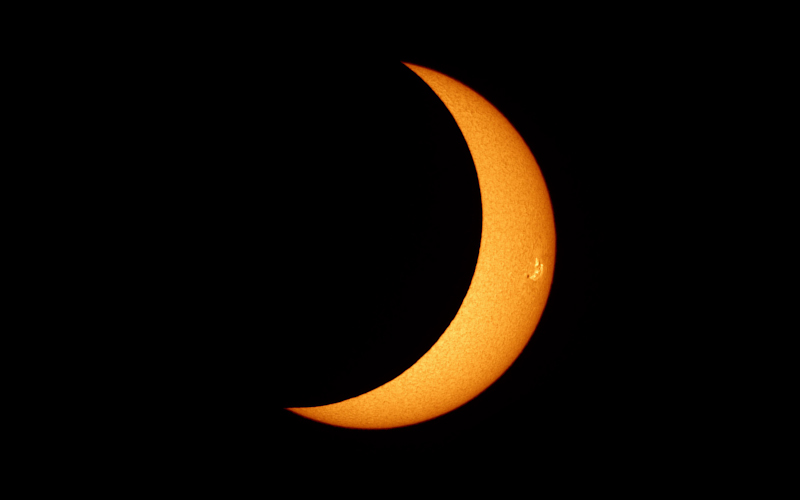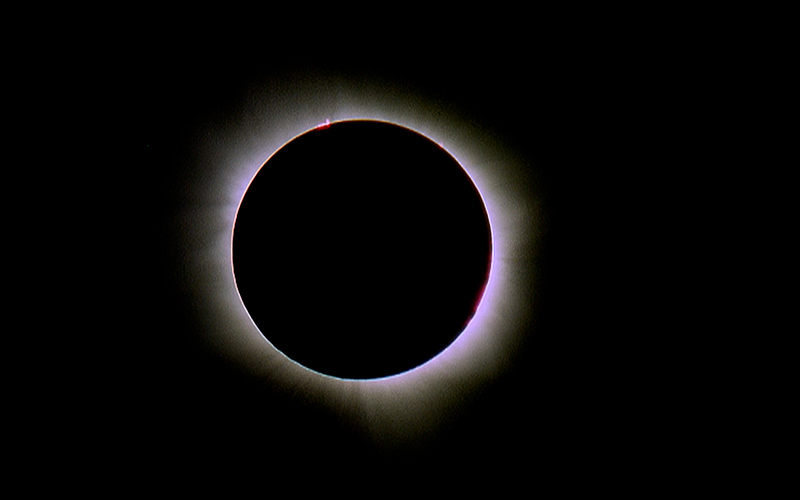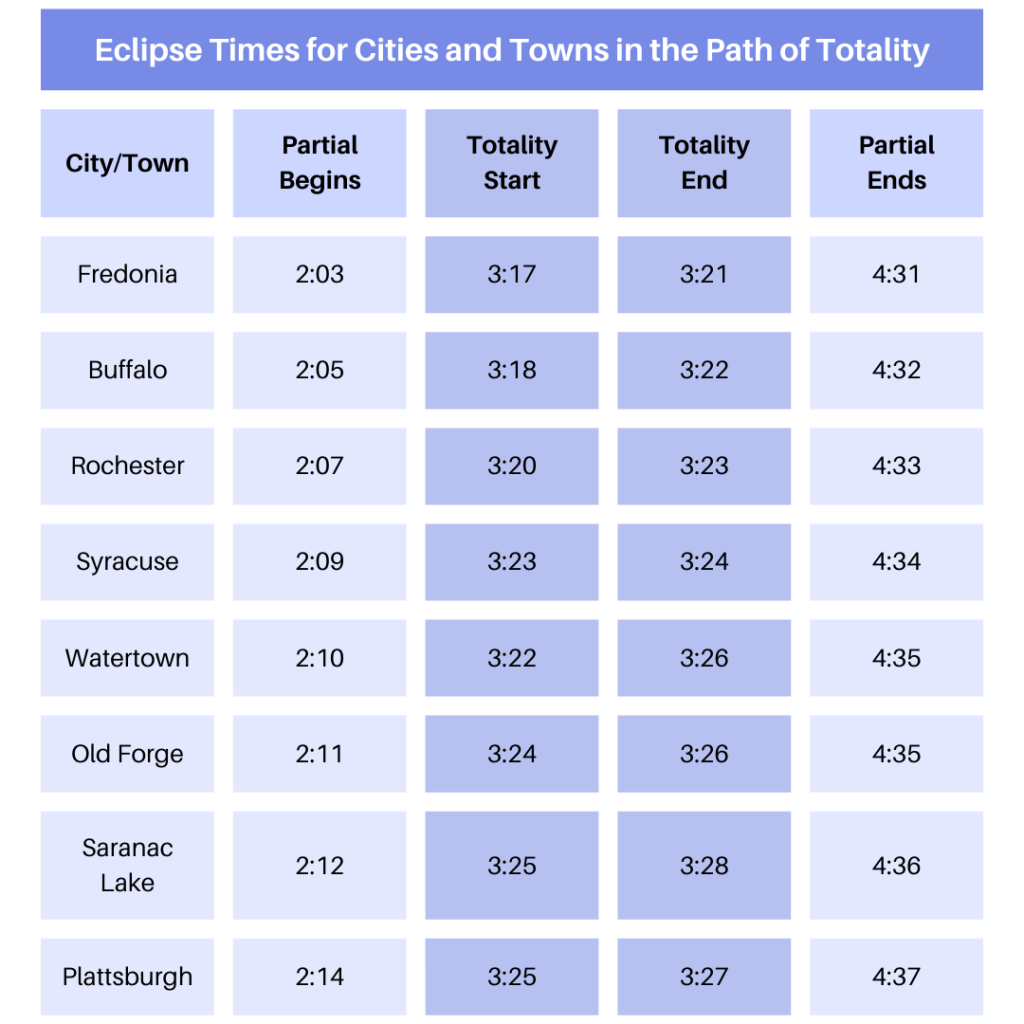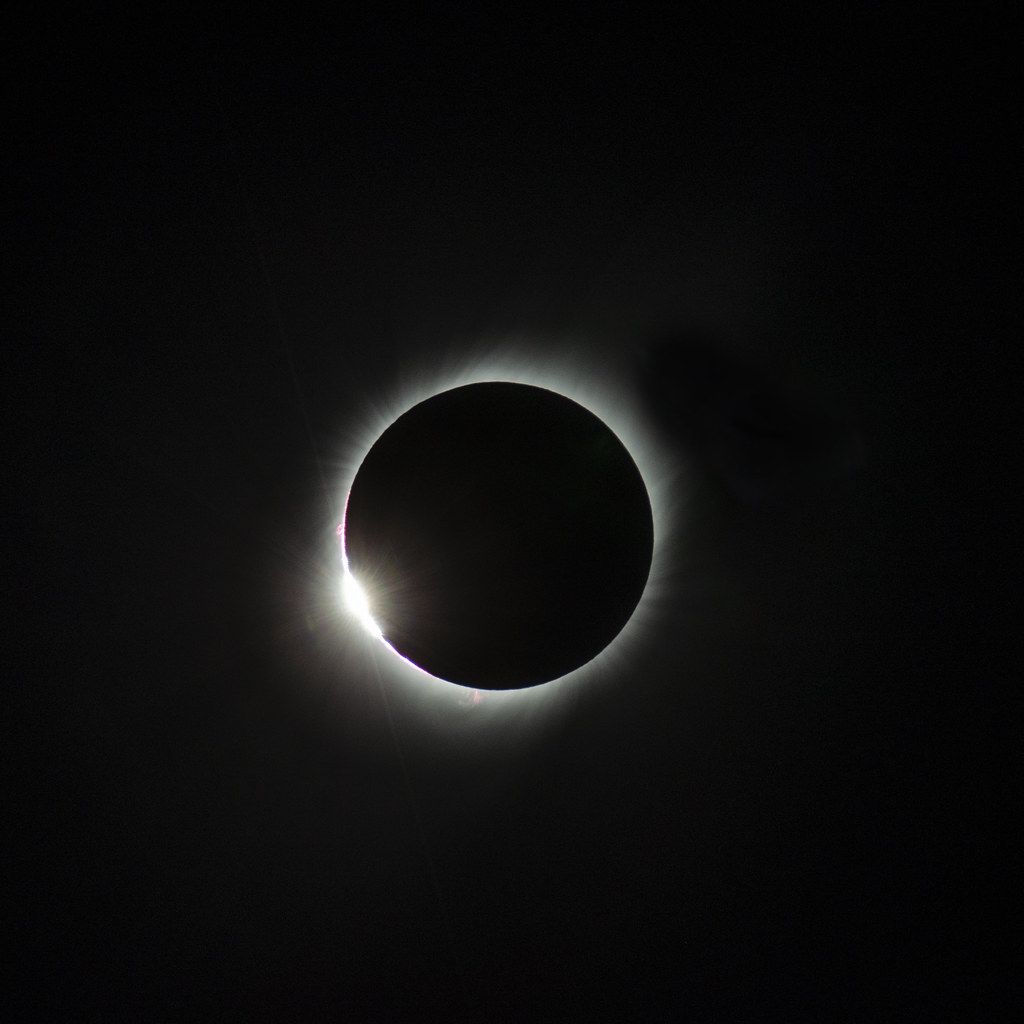On Monday, April 8th a total solar eclipse will be visible across North America. Here is everything you need to know before the eclipse.
What is a solar eclipse?
A solar eclipse occurs when the moon passes in between the sun and the earth, covering the photosphere (the sun’s face). A partial eclipse – when the moon partially covers the sun – happens two to five times per year. A total eclipse – when the moon completely blocks the sun – occurs every 18 months. However, a total eclipse usually passes over remote areas where it is difficult for people to view it.


Solar eclipses are the result of an extraordinary set of coincidences. The moon and the sun have the same angular size – how large an object appears from a given point. The sun is 400 times larger than the moon, but it is also 400 times further away from the earth. Therefore, when we look in the sky the moon and the sun appear to be the same size. As a result, the moon can completely block our view of the sun and create a total solar eclipse.
During a total eclipse, the moment when the moon completely covers the sun is called totality. During totality only the sun’s corona (the sun’s upper atmosphere) visible. On an average day the corona is not seen because it is more than one million times dimmer than the photosphere. However, during an eclipse the corona’s wispy white streamers of plasma can be seen constantly radiating out of the sun. During totality the sun will be as bright as a full moon.
If you are in the path of totality, you can briefly look at the eclipse to admire its features. Depending on your location, the moment of totality can last for up to 4 minutes and 28 seconds. The entire eclipse, from start to finish, will last about two hours.

Didn’t we just see a solar eclipse?
The last total solar eclipse that was visible in the United States occurred on August 21st, 2017. This year’s eclipse is much more exciting because it has a much wider path, meaning more people will be able to see the totality. This year’s path ranges between 108 to 122 miles wide and extends from Texas to Maine. In 2017, the path measured between 62 to 71 miles wide.
This year it is estimated that 31 million people live in the path of totality. However, you will still be able to see the eclipse if you don’t live in the path of totality. According to NASA, 99% people in the United States will still be able to see a partial eclipse, as the eclipse will be visible in every state in the continental US, including parts of Alaska and Hawaii.

What makes this eclipse so special?
For this year’s eclipse, the totality will be almost twice as long as the one in 2017, lasting up to 4 minutes and 28 seconds. This eclipse is also unique because it is occurring at the same time as a solar maximum – a period of extreme solar activity that happens every 11 years. This heightened solar activity will mean viewers will be able to see unique features such as prominences (bright clouds of cool plasma) and streamers (high density spikes of plasma). Scientists say that this eclipse is so unique that those who viewed the 2017 eclipse would have a completely different experience.
Additional features to look out for during the eclipse include crescent shadows and a 360 degree sunset. When the sky darkens, temperatures will drop. In the dark sky, it will also be easier to see bright stars and planets. Venus will be the brightest object in the sky, and may be seen to the lower right of the sun. Jupiter, the second brightest, may also be visible to the upper left.

Even if you are in an area where the maximum coverage will be 99%, your experience will be drastically different than those in the area of totality who see 100% coverage. Because the sun is one million times brighter than the moon, that 1% of the sun that is left uncovered will still shine making the sky as bright as an overcast day. If you are not in the path of totality, you cannot look directly at the eclipse at any time without eye protection.
When can I see it?
In the United States, there are twelve states that will be in the path of totality: Texas, Oklahoma, Arkansas, Missouri, Kentucky, Illinois, Indiana, Ohio, Pennsylvania, New York, Vermont, New Hampshire, and Maine. Check NASA’s website for a list of eclipse times in the path of totality.
Here is a list of eclipse times in New York State:


In case you can’t get a clear view of the eclipse due to poor weather, you can also livestream it online through the Exploratorium or NASA’s website.
Eclipse safety
Viewing the eclipse with unprotected eyes, binoculars, sunglasses, or a camera lens, can cause immediate and irreversible eye damage. To view the solar eclipse safely, do not look directly at the eclipse without safe solar viewing glasses (“eclipse glasses”). Safe solar viewers are more than 1,000 times darker than regular sunglasses and let in between 0.001% and 0.00005% of visible light. If you don’t have eclipse glasses, you can check the American Astronomy Society’s website for a list of safe solar viewers and glasses.
The moment of totality is the only time you can safely view the eclipse without eye protection. As soon as a small portion of the sun becomes visible again, put your eclipse glasses back on to avoid eye damage.
The next eclipse
The next solar eclipse that will be visible in the United States will be in the year 2044. However, there will not be another total solar eclipse in the United States until 2079.
Total solar eclipses are the result of “cosmic coincidences.” However, these coincidences won’t happen forever. The moon is slowly moving away from the earth at a rate of 1.5 inches per year. As it gets further away, it will appear smaller and smaller until it is no longer large enough to cover the sun. Someday, total solar eclipses will no longer be visible on Earth. According to their calculations, scientists predict the last total solar eclipse will be one billion years form now.
References
- American Astronomical Society. (2023a, September 1). A solar eclipse glossary. Solar Eclipse Across America. https://eclipse.aas.org/eclipse-america/eclipse-glossary
- American Astronomical Society. (2023b, September 17). How & why solar eclipses happen. Solar Eclipse Across America. https://eclipse.aas.org/eclipse-america/how-why
- American Astronomical Society. (2024a, March 9). Eclipse america 2024. Solar Eclipse Across America. https://eclipse.aas.org/eclipse-america-2024
- American Astronomical Society. (2024b, April 7). Suppliers of safe solar viewers & filters. Solar Eclipse Across America. https://eclipse.aas.org/eye-safety/viewers-filters
- Education. (n.d.). Center for Science Education. The Hidden Corona: Sun’s Outer Atmosphere | Center for Science Education. https://scied.ucar.edu/learning-zone/sun-space-weather/corona
- Interrante, A. (n.d.). How the 2024 total solar eclipse is different than the 2017 eclipse. NASA. https://science.nasa.gov/solar-system/skywatching/how-is-the-2024-total-solar-eclipse-different-than-the-2017-eclipse/
- Kulkarni S. Total solar eclipse 2024: how it will help scientists to study the Sun. Nature. 2024 Apr 3. doi: 10.1038/d41586-024-00973-1. Epub ahead of print. PMID: 38570658.lasma,form%20a%20coronal%20mass%20ejection.
- NASA. (n.d.-a). 2024 total Eclipse. NASA. https://science.nasa.gov/eclipses/future-eclipses/eclipse-2024/
- NASA. (n.d.-b). 2024 Total Eclipse: Where & When. NASA. https://science.nasa.gov/eclipses/future-eclipses/eclipse-2024/where-when/
- NASA. (n.d.-c). Total solar eclipse FAQ. NASA. https://science.nasa.gov/eclipses/future-eclipses/eclipse-2024/faq/
- NASA. (n.d.-d). Total solar eclipse safety. NASA. https://science.nasa.gov/eclipses/future-eclipses/eclipse-2024/safety/
- Rao, J. (2024, April 2). Stars, planets and more will be visible during the total solar eclipse on April 8. here’s where to look. Space.com. https://www.space.com/sky-during-totality-what-to-look-for-april-8-total-solar-eclipse
- Rochester Museum and Science Center. (2024, January 25). NYS Facts. Rochester Total Solar Eclipse 2024. https://rochestereclipse2024.org/nys-facts/
- What Are the Three Types of Solar Eclipses?. Exploratorium. (n.d.). https://www.exploratorium.edu/eclipse/three-kinds-solar-eclipses
- Zeiler, M. (2024, March 28). Detailed maps of totality for the 2024 eclipse. Astronomy Magazine. https://www.astronomy.com/observing/astronomys-atlas-maps-totality/

Leave a comment